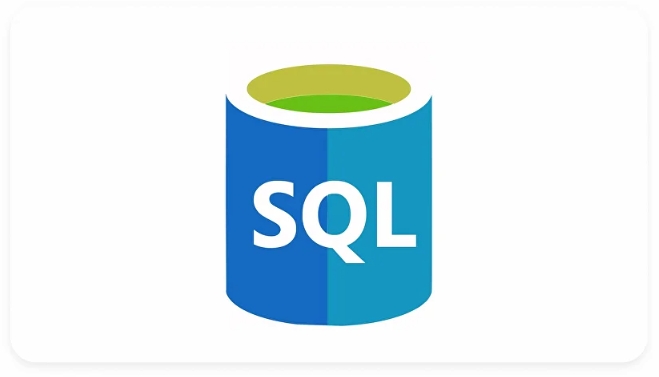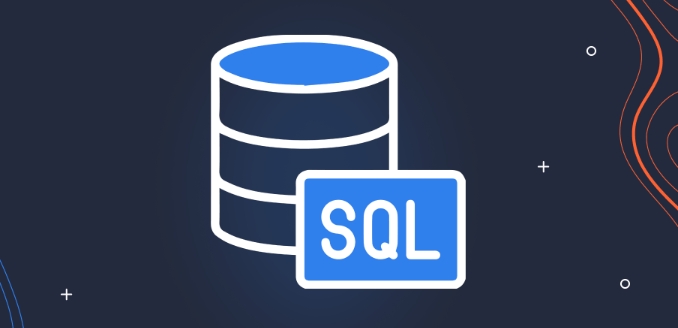Advanced SQL Index Types: Clustered, Non-Clustered, Columnstore
Jul 25, 2025 am 01:28 AMIn database optimization, three index types: Clustered, Non-Clustered and Columnstore have applicable scenarios. 1. Clustered index determines the physical storage order of data, suitable for range query and sorting, but may cause performance problems when inserting and updating; 2. Non-clustered index supports multi-condition query, but requires two searches to affect I/O efficiency, and Key Lookup can be reduced through INCLUDE; 3. Column storage index is designed for big data analysis, with high compression rate and fast scanning, which is suitable for aggregate query, but the update support is limited. When used, it needs to be reasonably selected based on the query mode and data characteristics.

In database optimization, indexing is a key tool to improve query performance. However, many people's understanding of indexes is still at the level of "accelerated query". In fact, the applicable scenarios of different types of indexes vary greatly. Clustered, Non-Clustered, and Columnstore are three common advanced index types in SQL. Understanding how they work and use scenarios can help you design database structures more efficiently.

Clustered Index: The order of data storage determines query efficiency
Clustered index determines the physical storage order of data in the table. Each table can only have one clustered index, because the data rows themselves can only be sorted in one way. Usually, the primary key is clustered index by default, but this is not mandatory.
- Suitable scenarios : When frequently queries or sorts a range based on a certain field, such as order time, user ID, etc.
- Advantages : Since the data is stored in index order, it is very fast to find continuous ranges of data.
- Notes :
- Inserting new records may cause page splits, affecting performance.
- Frequent update of clustered index columns is not recommended as this triggers physical movement of data.
For example, if you frequently filter orders by date, setting the order date as a clustered index can greatly increase the speed of such queries.

Non-Clustered Index: Quickly locate data without changing the storage order
A nonclustered index is an index structure independent of the data storage order. It stores the index key value and a pointer to the actual data (that is, the key of the clustered index). You can create multiple nonclustered indexes for a table.
- Suitable for scenarios : queries, filters or connections are required through multiple fields.
- Advantages : It will not affect the physical storage order of data, and is suitable for multi-condition query.
- Disadvantages : It requires two searches when querying - first check the index and then check the actual data row (called Key Lookup), which will increase I/O overhead.
Some optimization suggestions:

- Create a nonclustered index on commonly used fields in WHERE conditions.
- You can use the INCLUDE clause to include commonly used query fields into the index to reduce the need for Key Lookup.
- Be careful not to over-create indexes, otherwise it will affect write performance.
Columnstore Index: High-performance choice for big data analytics
Column storage indexes are designed to handle large-scale data aggregation queries, especially for data warehouses and reporting systems. Unlike traditional row storage, column storage index organizes data in columns, greatly improving compression rate and scanning efficiency.
- Suitable for scenarios : a large number of read operations, especially queries involving aggregate functions such as SUM, AVG, COUNT, etc.
- advantage :
- High data compression rate, saving storage space.
- Scanning large amounts of data is extremely fast.
- Type Distinguishing :
- Clustered Columnstore Index: Used to replace traditional heap tables, suitable for read-only or batch update data.
- Non-Clustered Columnstore Index: Coexist with clustered indexes, suitable for OLTP and OLAP hybrid loads.
It should be noted that column store indexes have limited support for frequent updates, especially Clustered Columnstore, which should be used with caution in OLTP scenarios with frequent updates.
In general, the key to choosing which index type depends on your query pattern and data characteristics. Clustered index determines how data is stored. Non-clustered index helps you find data from multiple angles, while column storage indexes are a good helper for big data analysis. With the right index, the database performance may be improved by orders of magnitude.
The above is the detailed content of Advanced SQL Index Types: Clustered, Non-Clustered, Columnstore. For more information, please follow other related articles on the PHP Chinese website!

Hot AI Tools

Undress AI Tool
Undress images for free

Undresser.AI Undress
AI-powered app for creating realistic nude photos

AI Clothes Remover
Online AI tool for removing clothes from photos.

Clothoff.io
AI clothes remover

Video Face Swap
Swap faces in any video effortlessly with our completely free AI face swap tool!

Hot Article

Hot Tools

Notepad++7.3.1
Easy-to-use and free code editor

SublimeText3 Chinese version
Chinese version, very easy to use

Zend Studio 13.0.1
Powerful PHP integrated development environment

Dreamweaver CS6
Visual web development tools

SublimeText3 Mac version
God-level code editing software (SublimeText3)

Hot Topics
 How to use IF/ELSE logic in a SQL SELECT statement?
Jul 02, 2025 am 01:25 AM
How to use IF/ELSE logic in a SQL SELECT statement?
Jul 02, 2025 am 01:25 AM
IF/ELSE logic is mainly implemented in SQL's SELECT statements. 1. The CASEWHEN structure can return different values ??according to the conditions, such as marking Low/Medium/High according to the salary interval; 2. MySQL provides the IF() function for simple choice of two to judge, such as whether the mark meets the bonus qualification; 3. CASE can combine Boolean expressions to process multiple condition combinations, such as judging the "high-salary and young" employee category; overall, CASE is more flexible and suitable for complex logic, while IF is suitable for simplified writing.
 How to create a temporary table in SQL?
Jul 02, 2025 am 01:21 AM
How to create a temporary table in SQL?
Jul 02, 2025 am 01:21 AM
Create temporary tables in SQL for storing intermediate result sets. The basic method is to use the CREATETEMPORARYTABLE statement. There are differences in details in different database systems; 1. Basic syntax: Most databases use CREATETEMPORARYTABLEtemp_table (field definition), while SQLServer uses # to represent temporary tables; 2. Generate temporary tables from existing data: structures and data can be copied directly through CREATETEMPORARYTABLEAS or SELECTINTO; 3. Notes include the scope of action is limited to the current session, rename processing mechanism, performance overhead and behavior differences in transactions. At the same time, indexes can be added to temporary tables to optimize
 How to get the current date and time in SQL?
Jul 02, 2025 am 01:16 AM
How to get the current date and time in SQL?
Jul 02, 2025 am 01:16 AM
The method of obtaining the current date and time in SQL varies from database system. The common methods are as follows: 1. MySQL and MariaDB use NOW() or CURRENT_TIMESTAMP, which can be used to query, insert and set default values; 2. PostgreSQL uses NOW(), which can also use CURRENT_TIMESTAMP or type conversion to remove time zones; 3. SQLServer uses GETDATE() or SYSDATETIME(), which supports insert and default value settings; 4. Oracle uses SYSDATE or SYSTIMESTAMP, and pay attention to date format conversion. Mastering these functions allows you to flexibly process time correlations in different databases
 Defining Database Schemas with SQL CREATE TABLE Statements
Jul 05, 2025 am 01:55 AM
Defining Database Schemas with SQL CREATE TABLE Statements
Jul 05, 2025 am 01:55 AM
In database design, use the CREATETABLE statement to define table structures and constraints to ensure data integrity. 1. Each table needs to specify the field, data type and primary key, such as user_idINTPRIMARYKEY; 2. Add NOTNULL, UNIQUE, DEFAULT and other constraints to improve data consistency, such as emailVARCHAR(255)NOTNULLUNIQUE; 3. Use FOREIGNKEY to establish the relationship between tables, such as orders table references the primary key of the users table through user_id.
 What is the purpose of the DISTINCT keyword in a SQL query?
Jul 02, 2025 am 01:25 AM
What is the purpose of the DISTINCT keyword in a SQL query?
Jul 02, 2025 am 01:25 AM
The DISTINCT keyword is used in SQL to remove duplicate rows in query results. Its core function is to ensure that each row of data returned is unique and is suitable for obtaining a list of unique values ??for a single column or multiple columns, such as department, status or name. When using it, please note that DISTINCT acts on the entire row rather than a single column, and when used in combination with multiple columns, it returns a unique combination of all columns. The basic syntax is SELECTDISTINCTcolumn_nameFROMtable_name, which can be applied to single column or multiple column queries. Pay attention to its performance impact when using it, especially on large data sets that require sorting or hashing operations. Common misunderstandings include the mistaken belief that DISTINCT is only used for single columns and abused in scenarios where there is no need to deduplicate D
 What is a sequence object in SQL and how is it used?
Jul 02, 2025 am 01:21 AM
What is a sequence object in SQL and how is it used?
Jul 02, 2025 am 01:21 AM
AsequenceobjectinSQLgeneratesasequenceofnumericvaluesbasedonspecifiedrules,commonlyusedforuniquenumbergenerationacrosssessionsandtables.1.Itallowsdefiningintegersthatincrementordecrementbyasetamount.2.Unlikeidentitycolumns,sequencesarestandaloneandus
 What is the difference between WHERE and HAVING clauses in SQL?
Jul 03, 2025 am 01:58 AM
What is the difference between WHERE and HAVING clauses in SQL?
Jul 03, 2025 am 01:58 AM
The main difference between WHERE and HAVING is the filtering timing: 1. WHERE filters rows before grouping, acting on the original data, and cannot use the aggregate function; 2. HAVING filters the results after grouping, and acting on the aggregated data, and can use the aggregate function. For example, when using WHERE to screen high-paying employees in the query, then group statistics, and then use HAVING to screen departments with an average salary of more than 60,000, the order of the two cannot be changed. WHERE always executes first to ensure that only rows that meet the conditions participate in the grouping, and HAVING further filters the final output based on the grouping results.
 Key Differences Between SQL Functions and Stored Procedures.
Jul 05, 2025 am 01:38 AM
Key Differences Between SQL Functions and Stored Procedures.
Jul 05, 2025 am 01:38 AM
SQLfunctionsandstoredproceduresdifferinpurpose,returnbehavior,callingcontext,andsecurity.1.Functionsreturnasinglevalueortableandareusedforcomputationswithinqueries,whileproceduresperformcomplexoperationsanddatamodifications.2.Functionsmustreturnavalu






